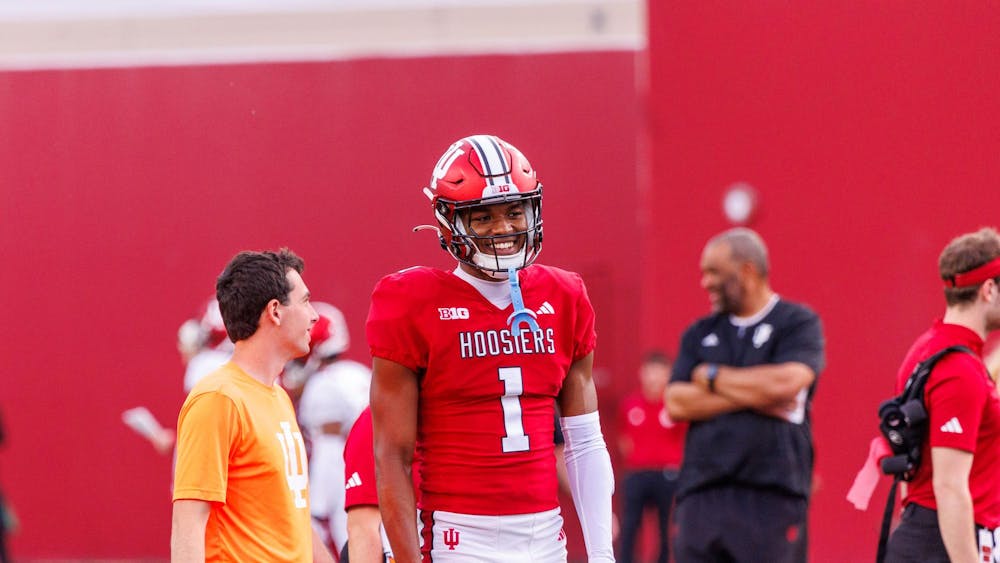An 8-foot-long metal replica of an MQ-9 Reaper drone towered above demonstrators as they read names of children killed in a CIA airstrike on Chenagai, Pakistan, in 2006.
Eighty civilians were killed in that strike, including 69 children at a religious school.
Members of the Bloomington Peace Action Coalition gathered Wednesday at the Monroe County Courthouse, with signs calling for an end to drones use by the United States military. They read names of victims killed by drones in the Middle East through a megaphone.
Militant drones are employed to kill terrorists, but have been known to cause civilian casualties. Drone warfare has been criticized for its lack of precision, but has increased during the Obama Administration.
“The program is flawed in its entirety, because it operates outside the rule of law,” event organizer Timothy Baer said.
He referred to drone attacks as extra-judicial because they act as judge, jury and executioner.
The demonstration happened in conjunction with the Drones Quilt Project, an exhibit on display at the Monroe County Public Library through May 18. The quilts are made with blocks containing the names of drone victims.
The group laid out informative literature and postcards that they encouraged passersby to fill out. Baer said he hoped to send at least 20 postcards to the White House.
He said he’s been making phone calls to the White House to advocate the proposed Drone Control Act, which would force the U.S. to immediately stop using drones for surveillance and attack operations.
BPAC activist David Keppel met with Senator Richard Lugar in February 2003 to lobby for peace, and the U.S. invaded Iraq a month later. Keppel said he’s disappointed by the ongoing violence in the region and the escalating use of drones.
“It’s a horrible version of the supermarket, ‘Buy one get one free,’” Keppel said of the drone program. “Every time you kill one enemy, you make two more.”
Drone technology isn’t all bad, said Nasrin Farrokh-Hekmat, an IU professor and native of Iran.
Some are used in the prevention of animal killings by poachers or for scientific research. But she said she’s still skeptical of their use in combat.
“Even if you kill some bad guys, you can’t take the chance,” she said.
Though there were fewer than 20 BPAC members in attendance, the drone model and signs garnered attention from commuters. Drivers honked their horns in solidarity as they drove past the square, showing peace signs with hands held out their windows.
One mo-ped driver shouted, “Don’t give Obama a free pass,” as he drove by.
Keppel said he compares the terror felt by civilians threatened by drones to the paralysis that occurs when a killer attacks a U.S. city. He said he wonders how long the killings will continue.
“I have to ask myself if this is really making us safer,’” he said.
Activists gather to protest militant drones

Get stories like this in your inbox
Subscribe





